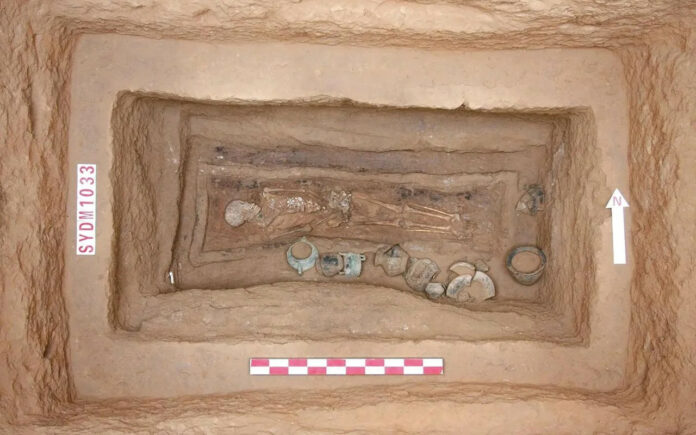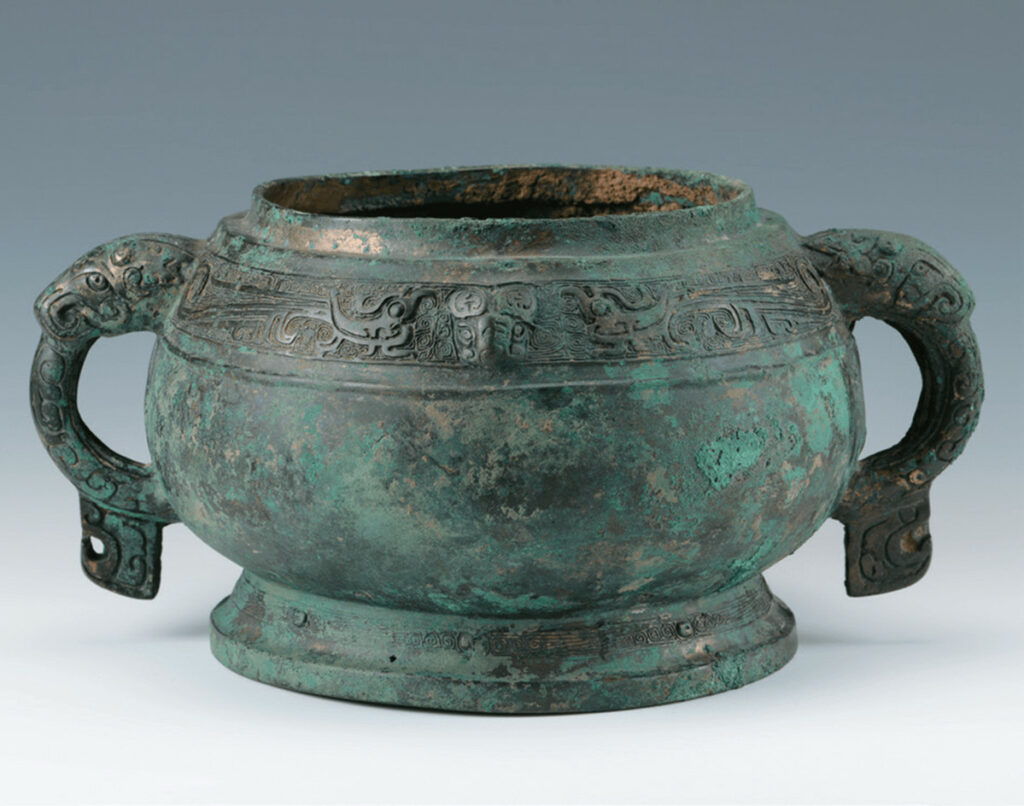In a remarkable find, archaeologists in Shanxi Province, North China, have discovered the tomb of a noblewoman that dates back roughly 3,000 years. This burial site, known as M1033, is situated within the Dahekou cemetery in Yicheng County and represents a significant breakthrough in the study of Chinese history.

Uncovering the Enigmatic Ba State
The Dahekou Cemetery, linked to the Western Zhou Dynasty, was first excavated in 2007, revealing more than 600 graves and 20 pits containing chariots and horses. This discovery has provided valuable insights into the Ba state, which had previously been absent from historical accounts of the Western Zhou era. Inscriptions on bronze artifacts found in the cemetery refer to the state’s clan name as Ba 霸, with Ba Bo recognized as its leading ruler.
Understanding Ancient Burial Customs
Xie Yaoting, the head of the archaeological team, described the tomb as medium-sized, featuring a central pit that held the remains of a sacrificial animal. The deceased, a woman estimated to be between 31 and 34 years old, was interred in a supine position with her limbs extended, indicating her status as a middle-ranking noblewoman from the mid-Western Zhou period.

The tomb yielded a rich assortment of artifacts, totaling 430 pieces organized into 93 categories. Among these items are bronze vessels, pottery, jade jewelry, and shell containers. The inclusion of a sacrificial animal in the tomb’s central pit underscores the ritualistic aspects of burial practices during this time.

Significance for Ancient Chinese Studies
The findings at the Dahekou cemetery have significant implications for our understanding of the social and political dynamics of ancient China. While the Jin state exerted considerable influence over much of Shanxi Province during this time, the existence of the Ba state hints at a complex web of feudal states and their interactions.

The archaeological effort at Dahekou Cemetery has been led by a team that includes the Shanxi Provincial Institute of Archaeology, the Cultural Relics Bureau of Linfen City, and the Cultural Relics and Tourism Bureau of Yicheng County. Their work has been crucial in revealing this extraordinary site, contributing to a deeper understanding of ancient China’s intricate history.
Video

